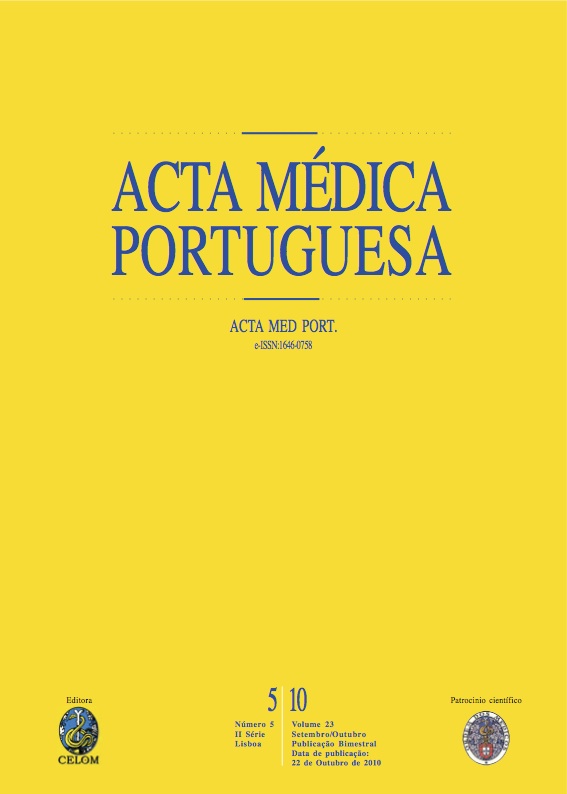Vacinação durante a gravidez.
DOI:
https://doi.org/10.20344/amp.718Resumo
Vaccination of pregnant women causes concerns both for themselves and for their healthcare providers. The main concern is the possibility of transmission of the virus/bacteria to the fetus in development. Due to obvious underlying ethical questions, clinical trials in this area are scarce and of difficult accomplishment.The aim of this paper is to formulate proper guidance for vaccine Administration in pregnant women, particularly on cases of inadvertent administration, through the review of current evidence on live-attenuated vaccine administration in pregnant women.Medline, Bandolier, The Cochrane Library and National Guideline Clearinghouse were searched using the following keywords (MeSH terms): vaccination AND pregnancy. The search was limited to articles published from January 2003 to December 2008. After exclusion of articles not concordant with the objectives of the review, 12 articles were selected (four review articles, two guidelines, one dissertation, the remaining were original articles), as well as the portuguese guidelines from Direcção Geral de Saúde (DGS) in what respects to vaccine administration.The contraindication of live-attenuated vaccine administration in pregnant women is based on the hypothetical/theoretical risk of potential negative effects for the developing fetus. Physicians should consider vaccinating pregnant women on the basis of the risks of vaccination versus the benefits of protection in each particular situation. Women should be told to avoid getting pregnant in the 28 days after liveattenuated vaccination. However, the inadvertent vaccination is not considered an indication for termination of the pregnancy.Downloads
Downloads
Como Citar
Edição
Secção
Licença
Todos os artigos publicados na AMP são de acesso aberto e cumprem os requisitos das agências de financiamento ou instituições académicas. Relativamente à utilização por terceiros a AMP rege-se pelos termos da licença Creative Commons ‘Atribuição – Uso Não-Comercial – (CC-BY-NC)’.
É da responsabilidade do autor obter permissão para reproduzir figuras, tabelas, etc., de outras publicações. Após a aceitação de um artigo, os autores serão convidados a preencher uma “Declaração de Responsabilidade Autoral e Partilha de Direitos de Autor “(http://www.actamedicaportuguesa.com/info/AMP-NormasPublicacao.pdf) e a “Declaração de Potenciais Conflitos de Interesse” (http://www.icmje.org/conflicts-of-interest) do ICMJE. Será enviado um e-mail ao autor correspondente, confirmando a receção do manuscrito.
Após a publicação, os autores ficam autorizados a disponibilizar os seus artigos em repositórios das suas instituições de origem, desde que mencionem sempre onde foram publicados e de acordo com a licença Creative Commons









